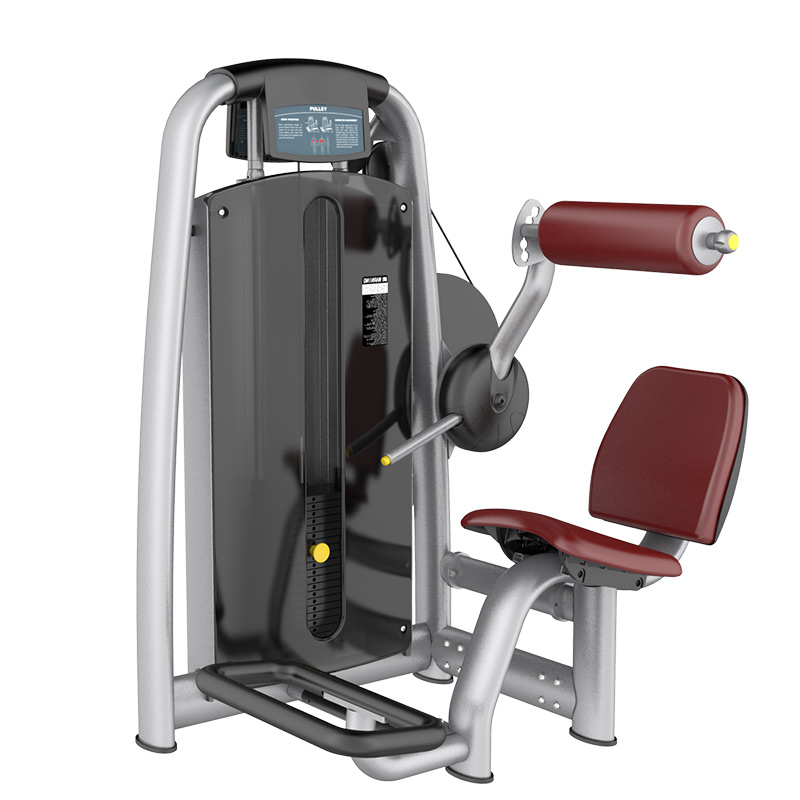The back extension machine is primarily used to strengthen the muscles of the lower back, enhance spinal stability, and improve posture. It helps to build muscular endurance and strength in the erector spinae muscles, which play a crucial role in supporting the spine and maintaining proper alignment during various movements and activities. Strengthening these muscles can reduce the risk of lower back injuries and alleviate discomfort associated with poor posture.
Design and Features
- Sturdy Frame: Constructed with a heavy-duty steel frame, the weight stack back extension machine ensures stability and durability. The frame is typically powder-coated to resist corrosion and wear, making it suitable for frequent use in commercial gym settings.
- Adjustable Pads and Seat: The machine features an adjustable pad for the upper body and a padded seat for the hips. Both are covered with durable vinyl upholstery and padded with high-density foam to provide comfort and support during exercises. The seat can be adjusted vertically or horizontally to accommodate users of different heights and ensure proper alignment with the machine’s pivot point.
- Footrests: Positioned at the base of the machine, the footrests provide stability and support for the feet during the exercise. They are designed to keep the user anchored securely while performing the back extension movement.
- Weight Stack or Plate Loading System: The resistance is provided by a weight stack located at the back of the machine, with a selector pin to choose the desired weight. Alternatively, some machines may use weight plates that can be loaded onto the machine to adjust the resistance.
- Adjustable Range of Motion: The machine allows users to adjust the range of motion to suit their flexibility and comfort level. This customization ensures that users can perform the exercise with proper form and alignment, maximizing the effectiveness of each repetition.
- Handles or Grips: Some machines come with handles or grips positioned near the upper body pad or on the sides of the machine. These handles provide additional support and stability when getting into position and performing the exercise.
- Safety Features: Many machines are equipped with safety stops or locking mechanisms to prevent the upper body pad from descending too far or too quickly. This ensures user safety and allows for controlled movements during the exercise.
How to Use
- Adjustment: Adjust the seat and upper body pad to ensure proper alignment with the machine’s pivot point. Select the desired weight on the weight stack or load the appropriate weight plates onto the machine.
- Positioning: Sit on the machine with your back against the upper body pad and hook your feet securely under the footrests. Cross your arms over your chest or place your hands behind your head (avoid pulling on your neck).
- Exercise: Lower your upper body towards the floor by bending at the hips while keeping your spine straight. Lower yourself until your torso is parallel to the ground or slightly lower, feeling a stretch in your lower back muscles. Use your lower back muscles to lift your torso back to the starting position, squeezing your glutes at the top. Maintain controlled movements throughout the exercise.





















































Reviews
There are no reviews yet.